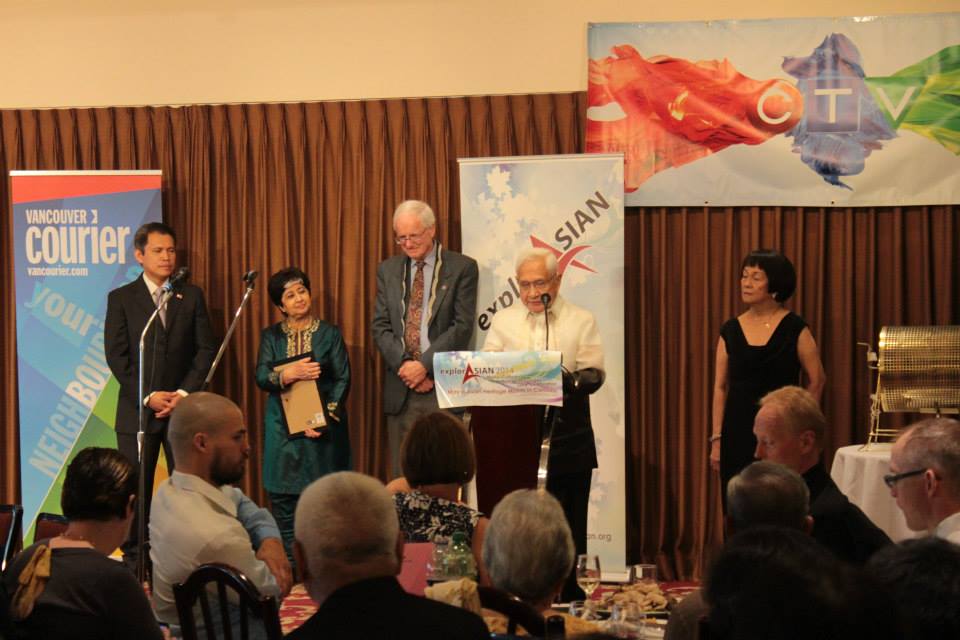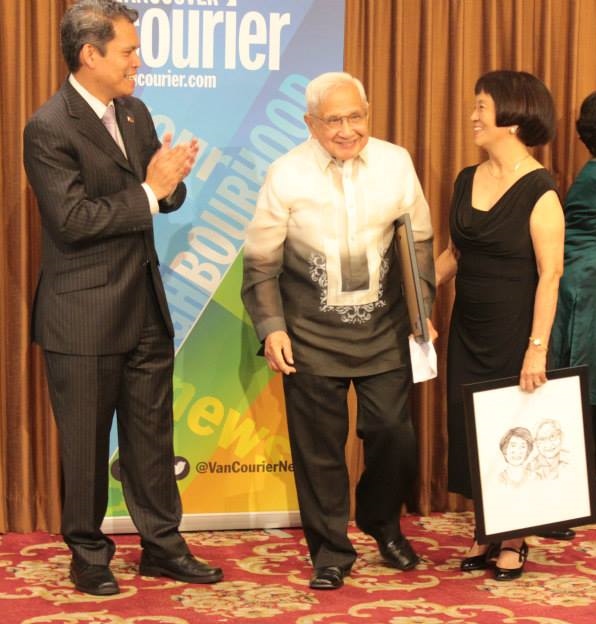For Rufino Olivar, regarded as the first Filipino licensed dentist in Canada, the road to success did not follow a straight path. It took him to places where few had been, and along the way, he developed skills, picked up tools of the trade, and most importantly, met the person who was to become his inspiration the rest of the way.
In 1957, as a newly-minted dentist from the Philippines, Rufino became part of the 1957 U.S. State Department’s Exchange Visitors’ Program, aimed at providing medical professionals more extensive trainings in their fields.
Rufino remembers feeling ecstatic about going to the land of opportunities. “I was really excited! I dreamt of staying in the U.S. permanently, but of course, there were restrictions. But I was determined to accept whatever was offered to me,” he said.
The course changed his life and set him on a career path. For five years, Rufino gained experience at various hospitals in Tennessee, Iowa, New Jersey and New York. In the Big Apple, he fell in love.
He met his wife, the former Elvira Tensuan, at the same building he stayed in. She was then living with her cousins and working as a medical technologist at the St. Joseph’s Hospital in Brooklyn, New York. According to Elvira, “Ours wasn’t love at first sight. He was friends with my cousin so we hung out. Eventually, he started calling me up and visiting me,” she recalled. They got married and settled in New Jersey, where they had Nanette, their first-born, now also a dentist.
MONTREAL
They transferred to Montreal, Canada after the five-year visa of Rufino expired.
Fortunately, he got a job at the Royal Victoria Hospital where he stayed for two years as a dental resident. But in order to legally stay in Canada, Rufino was required to go back to school. He then enrolled as a dentistry student at McGill University, ranked number one in Canada in the Medical Doctoral category by the Maclean’s University Rankings report. “McGill was the Harvard of Canada, according to my research,” he said.
After a year, Rufino got his degree, took the national dental board and passed it in 1965. This gave him the licence to practise in all provinces except Quebec.
He attributes his good fortune to sheer luck and a healthy dose of determination. Armed with double dentistry degrees from the Philippines and Canada, Rufino felt he can conquer the world.
VANCOUVER
The soft-spoken and unassuming gentleman was enticed by stories of beautiful Vancouver. “We heard about this city, one of the few places in the world where you can go up skiing in the morning and then go sailing in the afternoon. Weather is mild and there wasn’t much snow.” In February 1966, he packed his belongings and brought his family of four to the breathtaking coastal city.
He recalled that they were excited about the transfer but were apprehensive as they didn’t know anybody except for his cousin. Rufino immediately worked with Vancouver City Health Services and was stationed at the Vancouver General Hospital. “During lunchtime, I would walk around the lobby and see Filipino nurses. That’s how I knew them. They were the first Filipinos I encountered,” he said. There were very few Filipinos then, according to Rufino. “There were about 200,” he guessed.
He worked full-time with the hospital for two years. In 1968, he set up his own practice in Surrey, B.C. He continued to be affiliated with Vancouver City Health Services.
According to Rufino, he chose Surrey for his clinic site because there were not many dental clinics there. “I was booked for three months when I opened my clinic.” Back then, he said there were only two or three Filipinos in Surrey.
Elvira, for her part, was a stay-at-home mom. She recalls that at that time, there were no caregivers to help mothers with their young. Also, their son, Kenneth, was hearing impaired and had poor kidneys. “My son needed special attention,” she summed it up.
Later, she had another daughter, Blanche, now a dental hygienist.
FILIPINO COMMUNITY
Rufino was offered to head the Filipino Association of B.C. (FABC), a non-profit organization originally formed by the first Filipino families who settled in British Columbia in the late 1950s. Many consider FABC the “mother” of all Filipino organizations in B.C. But uncharacteristically, Rufino did not jump on this opportunity to lead the group. He valued humility and a simple life ahead of prominence. “I declined to be president because I didn’t have training in organizing and I was busy with my practice and the Vancouver Public Health Service,” Rufino said. Years later, the opportunity to head FABC came up again, and once again he refused.
But he never refused cries for help from Filipino friends. Their house was always open to fellowmen in need of shelter or a place to meet and to party. According to him, the Filipino families then were close-knit. “We were all friends and we stuck together. Not like now, you don’t even know people now,” he said.
CHALLENGES
“It’s so easy to get discouraged,” Rufino said about living abroad. He considered enrolling in a Canadian school, qualifying for the licensing exam and acquiring immigration status in Canada as his toughest challenges. He said he overcame these by persevering and by looking forward. “I don’t look back,” he added.
Elvira meanwhile recalled easily adjusting to life abroad. “There were so many things to see,” she said. There were no Filipino restaurants then in Vancouver, so they cooked their own food or they would go to Chinese restaurants to eat.
ADVICE
To new immigrants and professionals, Rufino recommends preparing themselves to take the licensing exams. On the other hand, Elvira cautioned Filipinos not to expect too much. “Be ready to accept disappointments, especially in jobs. You just have to work your way up and put in a lot of time and energy in what you do,” she said.
EXPLORASIAN
The Vancouver Asian Heritage Society honored Rufino and Elvira, together with four other couples in the Filipino-Canadian community with Community Builder Awards during the recent ExplorAsian festival.
– – –
Do you know an outstanding Filipino who deserves recognition? Nominate the next “FIlipino-Canadian In Focus” — click here.

